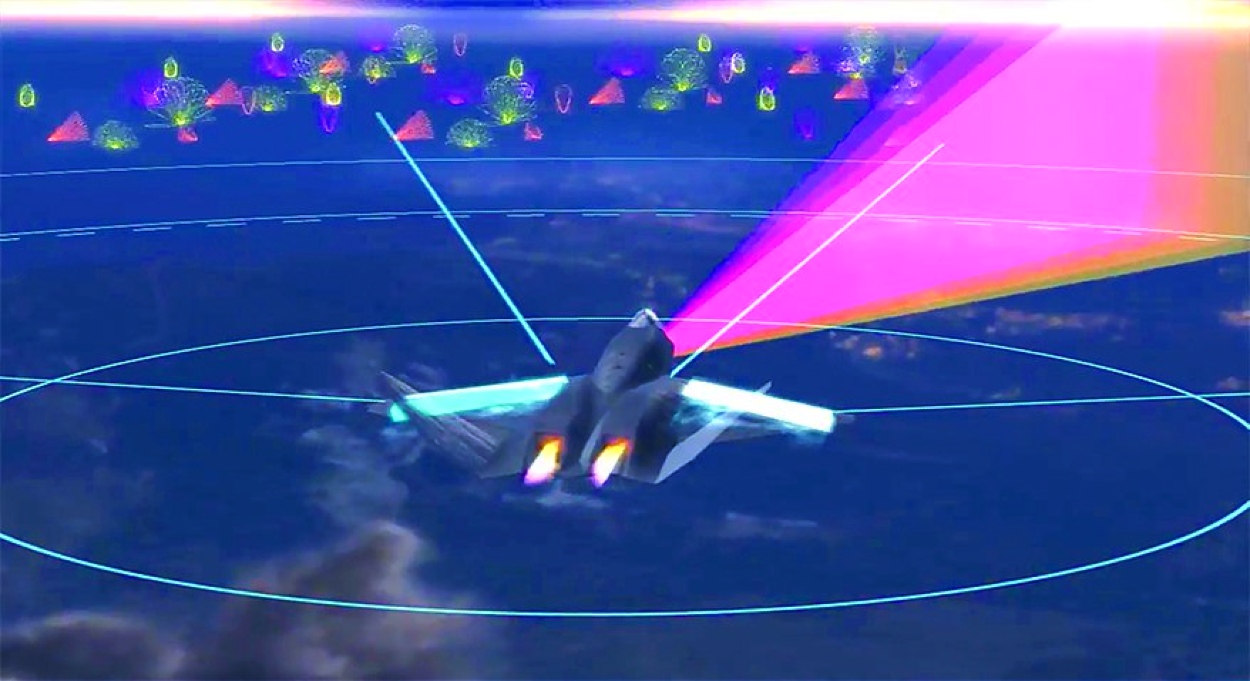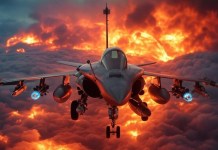The success of Electronic Warfare (EW) in the Russia-Ukraine war has spurred the US Army to revive its tactical capability in the area that diminished over the last 20 years following the Cold War.
India Gets A Taste Of F-35 Stealth Fighter As It Joins US, Australia And Japan For QUAD Drills
It has focused efforts to operationalize its tactical battlefield EW and jamming capabilities, according to Assistant Secretary of the Army for Acquisition, Logistics, and Technology Doug Bush, by engaging Lockheed Martin to create a prototype of the system.
A report in Defense News identifies the programs as the Terrestrial Layer System-Brigade Combat Team (TLS-BCT) and Echelons Above Brigade (EAB) initiatives. Bush told journalists on August 7, “Both TLS-BCT and EAB are on track, and I feel good about them. What we see in Ukraine adds to that urgency to get those going.”
The TLS combines cyber, electronic warfare, and signals intelligence systems, while the BCT variant is meant for smaller formations. The EAB is its larger and more capable derivative meant for Division and Corps-level formations.
Control of the electromagnetic spectrum is critical in modern warfare, as it is used for weapons guidance, communication, and tapping into and disrupting the enemy’s communications.
The developments come after Lockheed Martin beat another rival to develop a prototype for the Army in June to continue work on the TLS-EAB. Before that, in April, it engaged Lockheed Martin to fit Stryker combat vehicles made by General Dynamics with TLS-BCT technologies.
Russian Lead In EW
The EurAsian Times had first reported in late June about the Russian expertise in electronic warfare and counter-drone systems that led to several Turkish TB-2 Bayraktar’s being shot down and AFU servicemen seeking to limit their usage.
Russia has built this expertise since its experience in Syria, the Donbas War, and the Crimean conflict of 2014.
While some claimed how Russian EW accidentally jammed their communications and that Moscow was losing in other areas, they eventually claimed its EW reigned supreme. It devastated Ukrainian drones, as their UAVs were being shot down or captured at an alarming rate.
A report by the United Kingdom (UK)-based Royal United Services Institute (RUSI) noted that Moscow’s EW has consistently remained effective and brought down nearly 10,000 Ukrainian drones a month, approximately 333 per day.
Like its ‘echeloned’ air defense, with progressively overlapping short, medium, and long-range surface-to-air (SAM) systems, Russian ground forces have adequately distributed EW platforms covering every 10 kilometers of the front. Russia has the most diverse range of systems for tackling everything from drones, communications, satellite navigation signals, and satellites.
Moscow’s Diverse Systems
Russia’s Krasukha-2, Krasukha-4, RB-341V LEER-3, R-330Zh Zhitel, Murmansk-BN, and Moskva-1 are some of the known EW platforms, performing radio, communications, radar satellite navigation signal jamming of various frequencies and bands, along with Electronic Support (ES) and Electronic Attack (EA) roles.
The EurAsian Times had also reported how the 14Ts227 Tobol EW system disrupted the “synchronization” of the Starlink satellite internet service with its ground terminals.
US Army Is Behind
The reason identified behind the US’ lag in Electronic Warfare (EW) is the same as its industrial incapacity in churning out ammunition which has been unable to meet Ukraine’s hunger for tens of thousands every few days – the interventions in Iraq and Afghanistan.
The 20-year period from 1990 to 2020 saw the US fighting nonstate actors without a formal military, which did not require the industrial and technical capacity to fight a peer adversary.

A November 2019 report on NBC reported how the US military brass was waking up to the realization of Russia’s clear lead in EW. “While Russia had been perfecting the use of electronic warfare against Ukraine, since the end of Cold War, the US has mostly focused on fighting nonstate actors like the Taliban and Al Qaeda that lacked the technology to engage in electronic warfare, lulling the Pentagon into complacency about the threats facing US systems.”
Interestingly, the report clarified that the US Army was particularly affected by this deficiency. At the same time, the US Navy (USN) and US Air Force (USAF) maintained credible capability and systems, with specialized ships and aircraft for the purpose.
For instance, the USN has the immensely advanced E/A-18G Growler, a version of the F/A-18 Super Hornet, which can function as a dedicated ‘electronic attack’ and air dominance fighter. The USAF, meanwhile, has the RC-135 Rivet series of aircraft, with variants offering diverse capabilities ranging from Electronic, Signals, and Communications Intelligence (ELINT/SIGINT/COMINT).
The Army, which essentially retired its electronic attack assets, allowed it to jam enemy radars and communication links with the end of the Cold War. This was partly based on the idea that the Air Force or Navy could provide those capabilities.
But in a conflict against an enemy with robust air defenses today, US ground forces must have their capabilities on hand.
In Iraq and Afghanistan, almost everyone deployed conducted a routine battle update over the radio or phone. In a confrontation with Russia or its proxies, “this type of action will get units targeted through electronic warfare and then killed with artillery,” the NBC report quoted an unnamed army study.
- The author can be reached at satamp (at) gmail.com
- Follow EurAsian Times on Google News




